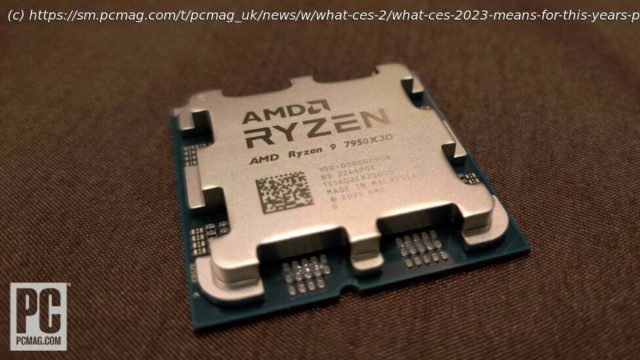This year’s CES offered a number of announcements, from new chips and platforms to a slew of new devices, that show us where the various companies in the PC ecosystem expect the market to go in the coming year.
I wasn’t able to attend CES this year but followed the happenings pretty closely, and now expect a year where the mainstream devices don’t change much. But those systems aimed at high-end gaming, workstations, and other niche markets could improve dramatically.AMD CPUs
As has been the case for many years, Intel and AMD used the run-up to the show to announce their mobile processor lineups for the coming year.
Of these, AMD’s was far more impressive, with AMD CEO Lisa Su unveiling its new Ryzen Mobile 7000 series of processors. The 7000 series now consists of four different architectures, with the last two digits of the processor specifying which one is used in the individual chip. (The 7 seems to mean this year’s chips; and the second digit differentiation between the level of the chips, known as Ryzen 9,7,5, and 3. For more details, see this « decoder ring. »)
At the high-end, the Ryzen 7045HX processors (known as Dragon Range) are effectively slimmed-down versions of the desktop processors AMD announced in the fall, with the firm’s new « Zen 4 cores », with the top-end processor consisting of 16 cores and 32 threads, with a boost frequency of up to 5.4GHz and a TDP of 55 to 75 watts, and manufactured on TSMC’s 5nm process. The power requirements mean you won’t be seeing these in thin and light notebooks; rather AMD positioned it for high-end gaming notebooks, although it sounds like it will also provide a nice boost for workstation-class machines as well. The 7045HX is due to be in machines from Alienware, Asus, Lenovo, and MSI in February.
More mainstream is the 7040 series (known as Phoenix). It is manufactured on TSMC’s 4nm process and includes up to eight of the firm’s new « Zen 4 » cores, which the company earlier said has up to a 13% improvement in instructions per clock. There are three versions of these chips, with the Ryzen 9 7940HS topping out with up to 8 cores and 16 threads, a boost frequency of 5.2GHz, 40MB of cache, and 35-45 watts TDP. These include the firm’s most recent mobile RDNA 3 graphics. More interestingly, AMD is talking up a new « Ryzen AI » component within the chip, enabled by technology from AMD’s acquisition of Xylinx. This should allow these chips to work much faster on AI-based data sets, with the company saying it was capable of up to 12 trillion AI operations a second. It will be very interesting to see if this really makes a big difference in real-world use of these notebooks. I’m looking forward to testing that.
These should be available in systems beginning in March. They seem suited for mainstream and gaming notebooks, but the power requirement seems still too high for thin and light machines.
For that, the firm also announced a new 7035 series, based on the « Zen 3+ » architecture (which seems to be a minor upgrade on the existing Zen 3 architecture in most of AMD’s current mobile chips) and built on TSMC’s 6nm process. This has both 35-watt (HS) and 15-28 watt (U) versions available. As a result, you’ll probably see chips like the Ryzen 7 7735U with 8 cores and 16 threads, a boost speed for up to 4.75GHZ, and 20MB of cache in some of the really thin and light systems this year. These are supposed to ship as soon as this month in systems from Acer, Asus, HP, and Lenovo.
Finally, in the mobile space, there is a new 7030 series, based on the 7nm process and the Zen 3 cores used in the current mobile processors.






